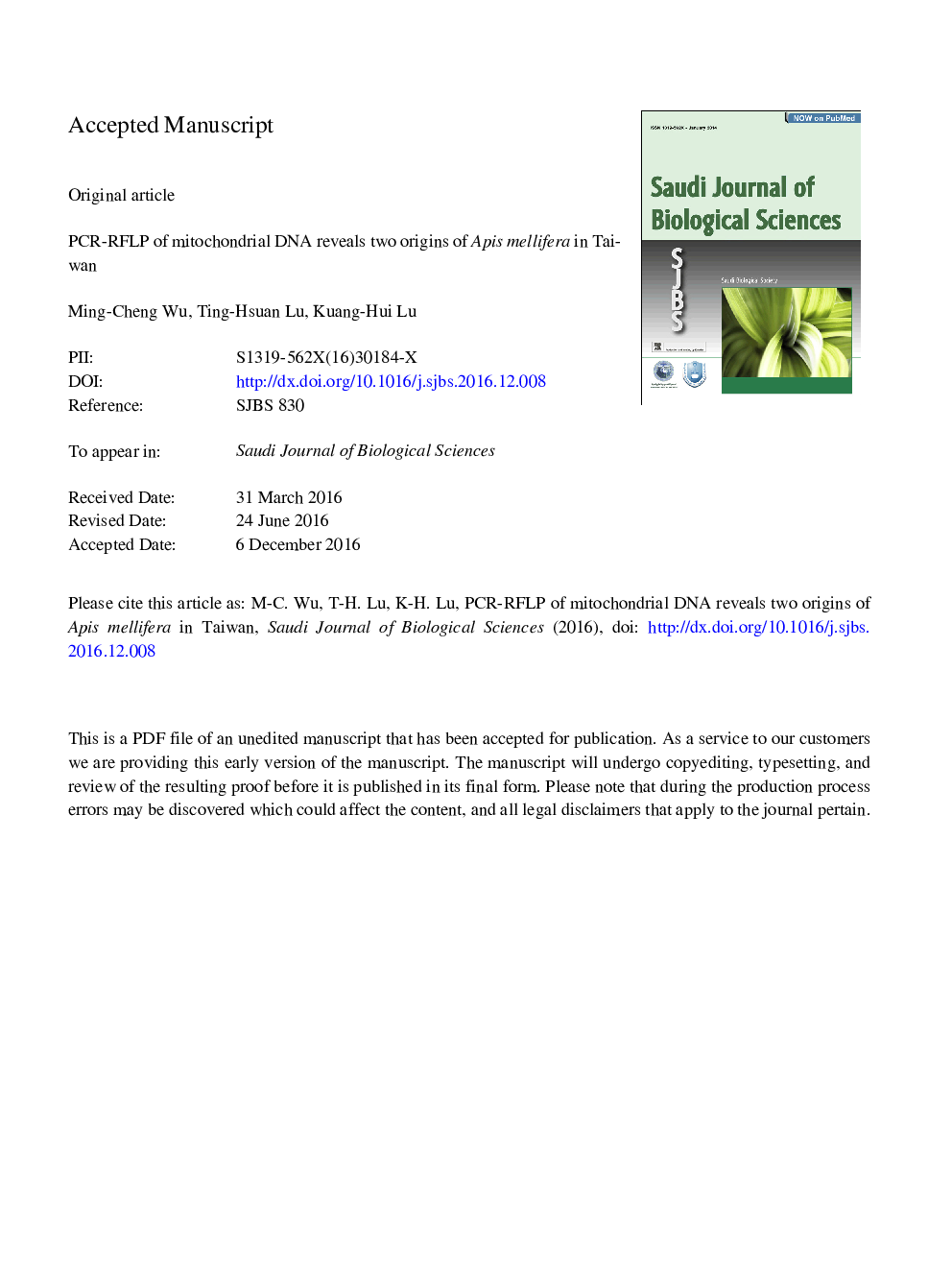| Article ID | Journal | Published Year | Pages | File Type |
|---|---|---|---|---|
| 5745482 | Saudi Journal of Biological Sciences | 2017 | 21 Pages |
Abstract
Beekeeping has been a highly valued industry in Taiwan. As a result, many subspecies of Apis mellifera have been introduced to Taiwan since 1911, leading to the hybridization of different subspecies. In order to know the matrilineal origins of Taiwan A. mellifera, a total of 280 samples collected from 33 apiaries throughout the island were examined. Using PCR-RFLP of four mitochondrial gene fragments, i.e., the non-coding region between tRNAleu and cytochrome c oxidase subunit II (intergenic tRNAleu-COII), cytochrome b (Cyt b), large subunit rRNA (Ls rRNA) and cytochrome c oxidase subunit I (COI), we only found two haplotypes exist in 280 samples. Haplotypes ababa and bbbaa account for 87% of these Western bees belonged to the Eastern European (C) lineage and 13% belonged to the Middle East (Z) lineage, respectively, with the latter being totally absent in northern Taiwan. African (A) and Mellifera (M) lineages, officially imported once in 1990s and 1930s respectively, were not detected. The identification of subspecies of A. mellifera and survey of their distribution on the island are expected to facilitate efficient breeding programs and establish a more booming beekeeping industry.
Keywords
Related Topics
Life Sciences
Environmental Science
Ecology
Authors
Ming-Cheng Wu, Ting-Hsuan Lu, Kuang-Hui Lu,
